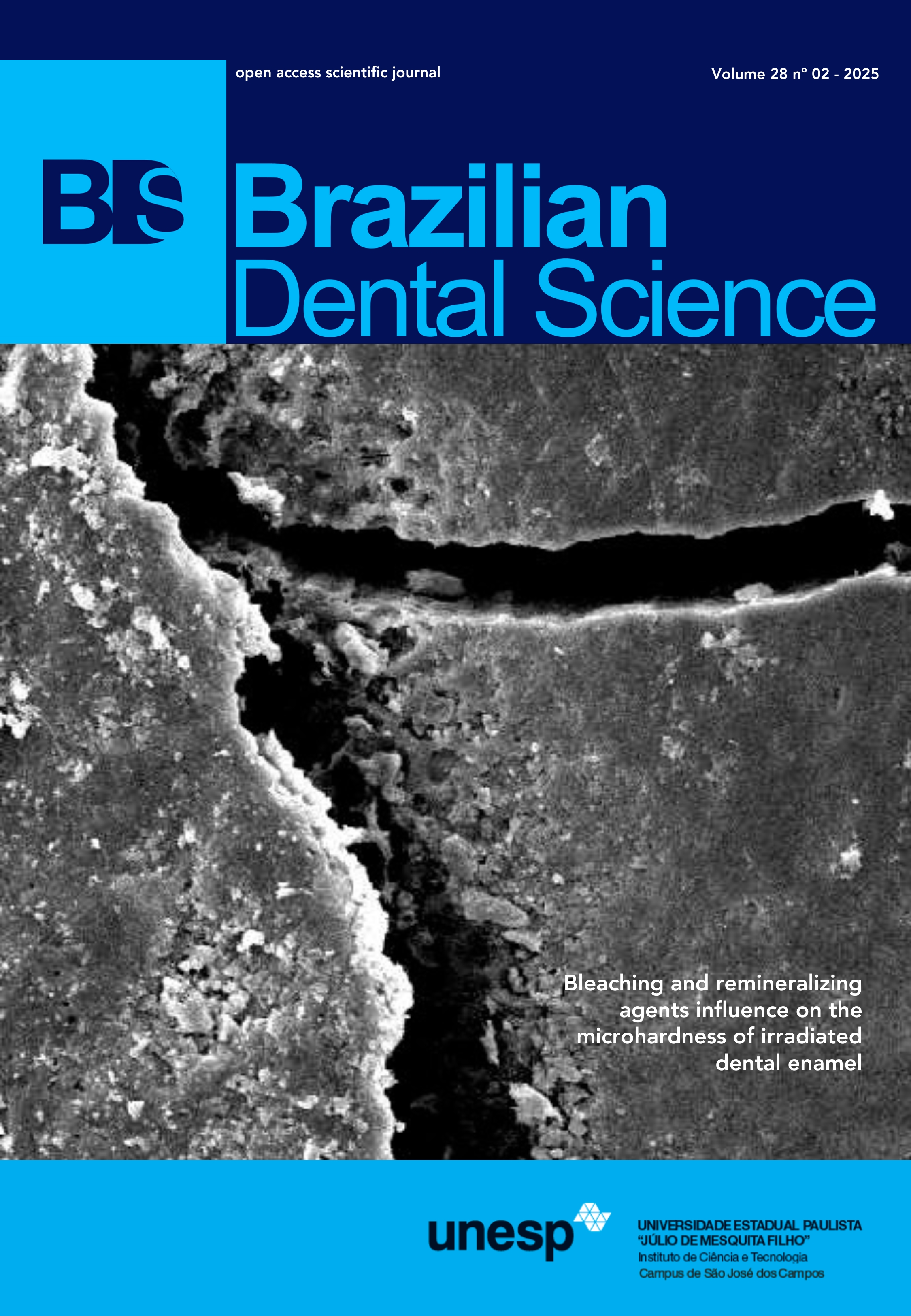Finite element methods in evaluating the stress distribution of dental implant on bone tissue: a bibliometric study
DOI:
https://doi.org/10.4322/bds.2025.e4646Abstract
Finite element method FEM is a very useful method that facilitates the numerical analysis of evaluating mechanical stress of different and complex geometries like dental implants. Objective: Identifying the published articles that use FEM to evaluate and solve problems regarding the biomechanical behavior of dental implants and the stress distribution on bone tissue. Material and Methods: The present study is a bibliometric analysis of the publications in the Scopus database, summarizing studies that analyze the stress distribution of dental implants on the bone using the FEM, during the period between 2003 and 2023, the study was conducted based on the PRISMA framework, the documents were analyzed using VOSviewer software to visualize the bibliometric network. Results: 606 articles were identified, the publication rate increased during the period studied, indicating an increased interest in this field. The International Journal of Oral and Maxillofacial Implants was the most prolific journal published by Quintessence Publishing Company. Brazil represents the most productive country in the published studies on dental implant stress distribution using the FEM. Conclusion: FEM has shown an important role in predicting stress distribution in bone around the dental implant device, which paves the way for more improvement in achieving the long-term integrity of dental implants.
KEYWORDS
Bibliometric study; Bone tissue; Dental implant; Finite element method; Stress distribution.
Downloads
Published
How to Cite
Issue
Section
License
Copyright (c) 2025 Brazilian Dental Science

This work is licensed under a Creative Commons Attribution 4.0 International License.
Brazilian Dental Science uses the Creative Commons (CC-BY 4.0) license, thus preserving the integrity of articles in an open access environment. The journal allows the author to retain publishing rights without restrictions.
=================




























